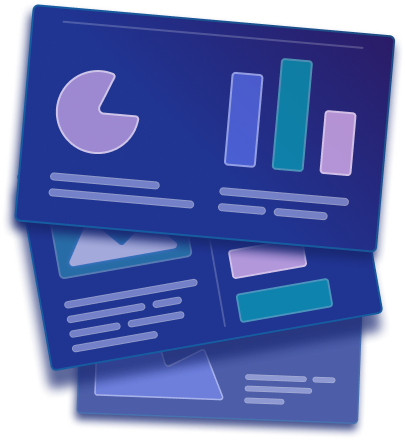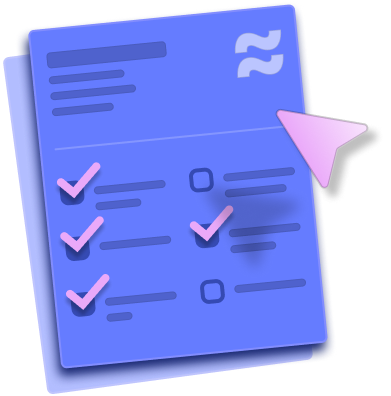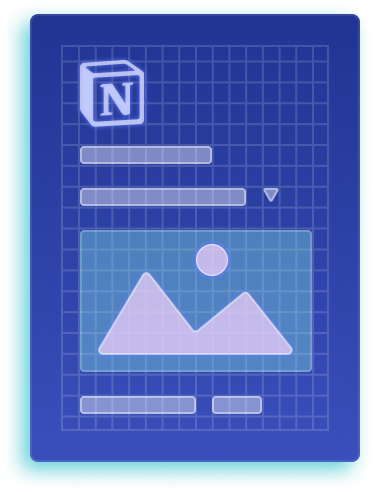
How Long Does It Take To Learn Webflow?
Webflow's popularity has been increasing significantly. In just three years, Webflow managed to more than quadruple its market share and is currently used by 0.9% of all websites whose content management system is known.
The need for Webflow developers and other professionals focusing on the popular service has significantly increased in the past couple of years, attracting many to start learning about the popular builder. Perhaps the primary reason Webflow seemed like a good choice is that it’s a low-code platform, allowing you to create clean, professional, and engaging sites without writing a single line of code.





Free Webflow Launch Checklist
After working on 200+ Webflow projects, we've compiled a checklist to use before launching your site.
Yet coding is vital for Webflow, giving you a key to unlock the platform’s full potential and versatility.
Many who are at the start of their Webflow journey wonder this: how long does it take to learn Webflow? Learning the basics could take as few as several days, but mastering Webflow takes much longer.
It’s safe to say that it is a never-ending process as the platform continuously evolves. In other words, the popular service always offers something new that can assist you with creating better-looking and more effective websites.
Reasons to Use Webflow
Here are some of the main reasons to consider using Webflow.
- Speed — As mentioned, there’s a reason why Webflow’s popularity has been recognized in a record time, as it speeds up the website-building process. Creating a fully-functional site will take only a fraction of what it would take you if you relied on code alone to build a site.
- Clean code, even for modern layout features — You can use Webflow to implement features such as CSS grid, classes, reusable styles, and flexbox. All of this is possible without using code. Webflow writes clean code for you as you design, on par with the code written by professionals.
- Completely custom interaction and animations — Webflow is equipped with a toolbox to help you quickly design and build interactive elements on your website with minimum coding.
- Webflow has plenty of tutorials — In addition to Webflow’s official set of tutorials dubbed Webflow University, the platform features a range of community-built free and paid resources aimed at beginners. The community, along with helpful Webflow-related content, keeps growing worldwide, and many are members of the vibrant Webflow forum, where you can get your questions answered by fellow members.

Time Required for Different Webflow Websites
Websites come in all shapes and sizes, so one cannot really determine the time needed to build them. A small one-pager with simple interactions can be completed within a day, whereas complex enterprise platforms require months of work.
The difference between Webflow and other builders is in the time required to do the actual grunt work. Let me elaborate.
A code-intensive approach without using Webflow means you’ll spend days just trying to tackle technical stuff and get it right to make the site work. A company might require an entire engineering team for this, while all of that is simplified and more intuitive in Webflow, where one developer could address all the issues in record time.
So, does less time spent building equal less time to complete a Webflow project? Not necessarily.
In my experience, many clients are marketers interested in getting the most out of Webflow, so we often have meetings to discuss the best solutions, which can be time-consuming. Still, we can actually test all the possibilities we take into account as they’re much easier to implement via Webflow compared to traditional website building.
This is because Webflow offers a drag-and-drop interface that makes it easy to quickly create and modify pages and elements, as well as a wide range of features and integrations that allow for more complex and powerful website solutions.
I still want to give you some concrete numbers here, so I decided to make an estimate of how much time Webflow experts spend on average just doing the heavy lifting. In other words, I didn’t count any meetings with clients, discovery workshops, tests, revisions, feedback sessions, and so on.
This is like estimating the time it takes to build a house without accounting for the hours spent interviewing architects and contractors, drafting blueprints, scheduling inspections, shopping for building materials, and so on. It's an integral part of the process that should not be overlooked.

Webflow vs Other Builders
How does Webflow compare in terms of difficulty and the time required to learn it compared to other popular tools?
- WordPress — WordPress has a steeper learning curve for beginners compared to Webflow. It involves understanding themes, plugins, and a more intricate backend. Customization often requires coding skills or reliance on third-party themes and plugins. Learning the basics of WordPress might take a few weeks, but mastering it, especially for custom designs and functionalities, can take months.
- Wix — Wix is known for its user-friendly drag-and-drop interface, making it suitable for beginners. It simplifies the website-building process but might have limitations for advanced customization. Learning Wix can be relatively quick, with beginners creating basic sites in a matter of days.
- Duda — Duda is a website builder with a range of templates and a drag-and-drop interface. It's designed to be user-friendly, making it accessible to beginners with minimal technical skills. Learning Duda can be relatively quick, especially for those who are familiar with website builders. Creating a basic site may take a few days.
Webflow strikes a balance between user-friendliness and advanced customization. While it may take a bit longer to learn than the simplest builders like Wix, it offers more flexibility without the complexity of platforms like WordPress.
Keep in mind that the website-building landscape evolves. New features, updates, and community support can impact the learning curve. Webflow, with its continuous evolution, remains competitive in offering a versatile and modern website-building experience.





Free Webflow Launch Checklist
After working on 200+ Webflow projects, we've compiled a checklist to use before launching your site.
Learning Webflow Requires Going Beyond Webflow Designer
Building a great Webflow doesn’t start with opening Webflow Designer. The entire process is a bit more complex, but each step described below is equally crucial if you want to get the most from the popular builder.
- Discovery phase — It all starts with creating a good plan for your Webflow project, which often includes defining the primary aim and preparing everything you’ll need to start the building process. You should discuss website features, structure, UX, website size, scalability, performance requirements, MVP timeline, and so on. Don’t forget to perform market analysis to understand different approaches and explore competition, all while gathering and organizing the relevant information required for your Webflow project.
- Design phase — During this phase, you actually get to design what the website will look like. Mind you, a Webflow developer often isn’t as proficient as a web design expert, and it’s sometimes better to use external software, such as Figma, to let the designers unleash their creative energy before moving it to Webflow. Some Webflow professionals offer all-in-one services, meaning they both design and develop the site using Webflow’s tools, such as Designer, CMS, and more.
- Development phase — Once the design is ready, it’s time to develop it into a fully-functional website, which can take anywhere from a couple of hours to a couple of days, depending on the overall complexity of a site. Even when the first version is developed, you should understand that your clients will have feedback, and additional iterations might be necessary.
- Review phase — Testing the website on different devices and ensuring everything runs smoothly is essential before the launch.
- Migration and launch phase — Launching takes up to an hour for small sites and up to a day or two for complex ones. Once the site is live, check if it works well and make adjustments, if necessary, until it looks perfect. Luckily, these changes can be easily implemented with Webflow’s tools, such as Editor.
All in all, mastering Webflow’s tools is just a piece of the puzzle. If you want to offer an end-to-end experience to clients who want a Webflow site, you need to understand and perfect each and every one of the five stages described above.

How to Learn Webflow? Best Sources for Mastering the Popular Website Builder
There are many ways to get started with Webflow, including a range of free and paid courses. If you have yet to gain experience using the platform, the most logical choice would be to explore Webflow University, as it can kickstart your journey to becoming a Webflow expert.
Webflow University serves as a resource for users to learn how to use the Webflow platform effectively. It offers a variety of tutorials, courses, and documentation to help both beginners and experienced users improve their skills in web design and development using Webflow. Here’s what you can expect:
- Courses — There are around 20 video courses available, and the total beginners should start with Webflow 101. However, you’ll find many other interesting tutorials on design, dev, SEO, localization, accessibility, Figma, and more.
- Documentation — Webflow keeps extensive documentation on an array of topics related to the popular tool. This is a great learning section if you’re stuck with a particular issue when using Webflow and want to explore solutions.
- Interactive learning — Play games and enjoy other interactive lessons to master Webflow.
- Certifications — Take an exam and earn a certificate in several different Webflow-related fields.
- Glossary — The glossary presents common words and expressions used in web development, design, and Webflow.
However, intermediate and advanced users should also seek other courses, videos, and articles to learn different approaches and how to solve concrete problems with the popular builder.
Ultimately, the best way to learn the basics is to play around with tools and try to build something. Creating a basic Webflow account is free, and you’ll gain access to the majority of tools this service offers.
Here’s a short overview of sources for learning Webflow created by Flow Ninja:

Tips and Best Practices for Learning Webflow
Learning Webflow efficiently requires a strategic approach and a combination of hands-on practice, structured learning, and problem-solving.
Here are some tips and best practices to help you make the most of your Webflow learning journey:
- Start with Webflow University — Webflow University is a treasure trove of tutorials, courses, and documentation. Follow the structured learning paths — start with the basics and gradually progress to more advanced topics.
- Hands-on practice — Learning by doing is key. Don't just watch tutorials; actively apply what you've learned by building your projects. Experiment with different elements, interactions, and layouts to reinforce your understanding. Best Practice: Create a practice project, such as a personal portfolio or a simple landing page. Apply concepts from each tutorial to your project, and iterate as you learn more. Practical experience accelerates the learning process.
- Join the Webflow community — Engage with the Webflow community through forums, social media, and local meetups. Connect with other learners and experienced professionals. Share your challenges, ask questions, and learn from the experiences of others.
- Explore Webflow templates — Explore and dissect existing templates to understand how different elements and interactions are implemented. Templates provide a practical way to see real-world examples of design and functionality.
- Explore other people’s work — Webflow features the fantastic Made in Webflow section, where you can explore what others do. Some of the websites are 100% cloneable, meaning you can copy them to your Webflow Designer and play around with them.
- Consistent practice schedule — Dedicate regular, focused time to learning Webflow. Consistency is crucial for skill development, both soft and hard skills. Set aside specific periods each week for learning, whether it's an hour every day or a few concentrated sessions per week.
- Explore advanced features gradually — Once you have a solid grasp of the basics, gradually explore advanced features like CMS, dynamic content, and e-commerce. Don't rush into complex functionalities until you feel confident with the fundamental aspects of Webflow.
- Stay updated on Webflow updates — Webflow frequently releases updates with new features and improvements. Stay informed about these updates to leverage the latest tools and functionalities.
- Build a diverse portfolio — As you gain proficiency, diversify your portfolio by building projects with different styles and functionalities. This showcases your versatility as a Webflow developer.
Start Building Websites with Webflow
Everyone can start exploring Webflow for free, including freelancers, marketing agencies, designers, developers, and even beginners. Even though one can get into the swing of things quite quickly — we’re talking several days to several weeks. Mastering Webflow, on the other hand, takes time and effort and is a much longer process that could take years.
Webflow development is just one step in creating online experiences using the popular low-code service. To truly master Webflow, one needs to take a deep dive into the platform’s other tools that can help you with content management, SEO, design, and much more.
Of course, one should not forget about Webflow templates as a great tool for those who want to explore existing designs and adjust them for their user, saving some time in the process. For instance, if the user is building a professional portfolio website, they can choose from a range of templates that already include features such as a contact form, portfolio gallery, and blog sections.
If you need assistance building a Webflow website or want a team of experts to build it from scratch, feel free to get in touch with Flow Ninja.





Free Webflow Launch Checklist
After working on 200+ Webflow projects, we've compiled a checklist to use before launching your site.
.png)

.png)

in mind?
Talk with our team and learn how your ideas can become digital experiences.

.svg)




_(1).png)
.png)











.png)
.png)










.svg)

.png)
.png)
.webp)
.svg)


